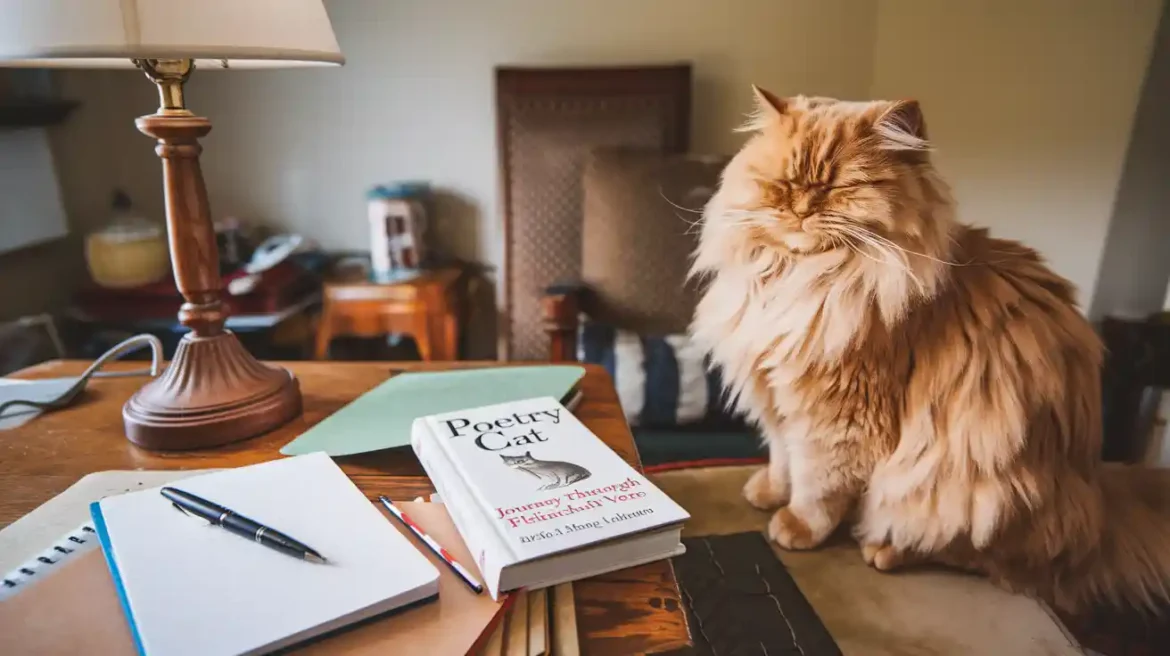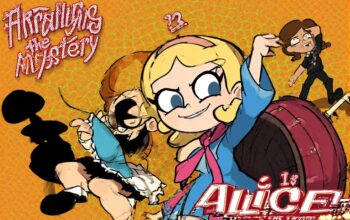
Cats have always captivated our hearts with their mysterious charm and graceful movements. Consequently, it’s no surprise that poets throughout history have turned to these enigmatic creatures for inspiration. The term “poetry cat” evokes a delightful blend of feline elegance and the artistry of words. Whether you’re a poet seeking muse or a cat lover enchanted by verse, this article dives deep into the world of poetry inspired by cats. From famous works to tips for crafting your own, we’ll explore how cats have shaped literature and culture. So, grab a cozy seat, perhaps with a purring companion, and let’s embark on this poetic journey.
What Is a Poetry Cat?
A poetry cat represents the intersection of feline allure and poetic expression. Specifically, it refers to poems inspired by cats or the idea of a cat as a muse for creative writing. Cats, with their quiet elegance and enigmatic personalities, naturally lend themselves to poetry. For instance, their soft paws and piercing eyes spark vivid imagery. Moreover, poets often use cats to symbolize mystery, independence, or even spirituality. By weaving these qualities into verse, a poetry cat becomes a powerful metaphor. This concept resonates with writers and readers alike, as it captures the essence of feline-inspired creativity in literature.
The Historical Role of Cats in Poetry
Historically, cats have held a special place in poetry across cultures. In ancient Egypt, for example, cats were revered as divine, inspiring early poetic tributes. Similarly, in Japanese haiku, cats often symbolize grace and transience. Fast forward to the 19th century, poets like Charles Baudelaire celebrated cats for their mystique. His poem “The Cat” portrays felines as both sensual and spiritual. Likewise, in English literature, T.S. Eliot’s Old Possum’s Book of Practical Cats brought whimsical feline characters to life. These examples highlight how cats have consistently inspired poets, making the poetry cat a timeless symbol of creativity and wonder.
Famous Cat Poems to Inspire You
Several iconic poems showcase the poetry cat’s enduring appeal. First, T.S. Eliot’s Macavity: The Mystery Cat paints a vivid picture of a cunning feline. Additionally, Emily Dickinson’s “She Sights a Bird—She Chuckles” captures a cat’s playful nature. Meanwhile, William Carlos Williams’ “Poem (As the cat)” uses simple yet evocative language to describe feline grace. Furthermore, contemporary poets like Mary Oliver have penned verses celebrating cats’ quiet wisdom. These works demonstrate how poets use cats to explore themes like independence and curiosity. Reading these poems can spark your own creativity, encouraging you to craft your own poetry cat masterpiece.
Why Cats Inspire Poetry
Cats inspire poetry due to their unique traits. Their silent movements, for instance, evoke a sense of mystery that poets love to capture. Additionally, their independence mirrors the free spirit of creativity. Cats also embody duality—both affectionate and aloof—which makes them rich subjects for metaphor. Moreover, their physical beauty, from sleek fur to piercing eyes, provides vivid imagery. Beyond aesthetics, cats often symbolize deeper concepts like intuition or resilience. As a result, poets find endless inspiration in their feline companions. Whether it’s a house cat or a stray, the poetry cat stirs emotions that translate beautifully into verse.
The Symbolism of Cats in Poetry
Cats carry profound symbolism in poetry. Often, they represent mystery due to their elusive nature. For example, a cat’s nocturnal habits might symbolize the unknown or hidden truths. Additionally, their independence reflects themes of freedom or self-reliance. In some cultures, cats signify spirituality or protection, as seen in ancient Egyptian poetry. Furthermore, their duality—both wild and domestic—makes them versatile symbols. Poets like Pablo Neruda used cats to explore love and solitude. By incorporating these meanings, a poetry cat poem becomes more than just words; it transforms into a layered exploration of human emotions and experiences.
How to Write Your Own Poetry Cat Poem
Writing a poetry cat poem is a rewarding creative exercise. First, observe your cat or imagine a feline’s traits. Notice their movements, like the flick of a tail or a sudden pounce. Next, brainstorm vivid adjectives—sleek, elusive, or radiant. Then, choose a poetic form, such as a haiku or free verse. For instance, a haiku captures a cat’s essence in just 17 syllables. Additionally, use metaphors to deepen your poem’s meaning. A cat’s eyes might represent stars or secrets. Finally, revise your work for rhythm and flow. By following these steps, you’ll craft a poem that celebrates the poetry cat’s magic.
Tips for Crafting Vivid Cat Imagery
Creating vivid imagery is key to a successful poetry cat poem. Start by focusing on sensory details. For example, describe the soft thud of paws on hardwood or the glint of eyes in moonlight. Next, use active verbs like “prowl” or “leap” to bring movement to life. Additionally, incorporate similes or metaphors—perhaps a cat’s fur is “like midnight silk.” Moreover, vary your language to avoid repetition. Instead of “cat,” try “feline” or “shadow.” Finally, evoke emotions by connecting the cat’s actions to human feelings, like curiosity or calm. These techniques ensure your poetry cat poem captivates readers with rich, immersive imagery.
The Cultural Significance of Cats in Poetry
Cats hold cultural significance in poetry worldwide. In Japan, for instance, haiku poets often feature cats to symbolize fleeting beauty. Similarly, in Celtic folklore, cats represent mystery and magic, influencing poetic themes. Meanwhile, in modern Western literature, cats often embody domestic comfort or rebellion. For example, Beat poets like Allen Ginsberg used cats to reflect nonconformity. Additionally, internet culture has amplified the poetry cat phenomenon, with viral cat poems shared across platforms like Instagram. This global fascination shows how cats transcend borders, inspiring poets to weave their essence into verses that resonate with diverse audiences.
Modern Poetry Cat Trends
Today, the poetry cat trend thrives in digital spaces. Social media platforms, for instance, host countless cat-inspired poems. Hashtags like #CatPoetry and #FelineMuse trend regularly, showcasing short, witty verses. Additionally, poets use visual platforms like Instagram to pair poems with cat photos, boosting engagement. Moreover, online communities like Reddit’s r/Poetry often feature cat-themed challenges. Furthermore, spoken word events increasingly include poetry cat performances, blending humor and artistry. This modern resurgence highlights how technology has amplified the poetry cat’s appeal, making it easier for poets to share their work and connect with cat-loving audiences globally.
Poetry Cat in Children’s Literature
Cats frequently star in children’s poetry, captivating young readers. For example, Dr. Seuss’ The Cat in the Hat uses playful rhymes to tell a whimsical story. Similarly, Shel Silverstein’s poems often feature cats as mischievous characters. These works engage children with their rhythmic language and vivid imagery. Additionally, cat poems teach kids about emotions like curiosity or bravery through feline antics. Moreover, parents and educators use poetry cat books to foster a love of reading. By blending fun and learning, these poems ensure the poetry cat remains a beloved figure in children’s literature, inspiring creativity from a young age.
How to Share Your Poetry Cat Creations
Sharing your poetry cat creations is easier than ever. First, consider posting on social media platforms like Instagram or X, using hashtags like #PoetryCat or #CatPoem. Next, join online poetry communities, such as AllPoetry or Poetry Foundation forums, to connect with other writers. Additionally, submit your work to literary magazines that accept cat-themed poetry. For instance, journals like The Fiddlehead often welcome creative submissions. Moreover, consider reading your poem at local open mic nights. Finally, compile your poems into a blog or eBook for wider reach. By sharing your poetry cat, you’ll inspire others and build a creative community.
Tools for Poetry Cat Writers
Several tools can enhance your poetry cat writing. For instance, RhymeZone helps find rhymes for cat-related words. Additionally, Grammarly ensures your poem is polished and error-free. Meanwhile, apps like Evernote organize your drafts and ideas. Furthermore, Canva lets you create visual poetry posts for social media, pairing verses with cat images. For structure, try Poetic Forms on Poetry Foundation’s website to explore styles like sonnets or haikus. Moreover, platforms like Medium allow you to publish your poetry cat work online. These tools streamline the creative process, helping you craft and share stunning feline-inspired poems with ease.
The Emotional Impact of Poetry Cat
Poetry cat works often evoke deep emotions. For example, a poem about a cat’s quiet companionship can stir feelings of comfort. Similarly, verses about a lost feline might evoke sadness or nostalgia. Additionally, humorous cat poems, like those about playful antics, bring joy to readers. Moreover, the poetry cat’s universal appeal connects people across cultures, as cats are beloved worldwide. By tapping into these emotions, poets create lasting impressions. Whether it’s a heartfelt ode or a lighthearted limerick, a poetry cat poem resonates because it reflects shared human experiences through the lens of feline charm.
SEO Tips for Promoting Poetry Cat Content
To promote your poetry cat content, optimize for SEO. First, use keywords like “poetry cat,” “cat poems,” and “feline poetry” naturally throughout your text. Aim for a keyword density of 0.5–2%. Next, include internal links to related content, such as other poetry articles. Additionally, use descriptive alt text for cat images to boost accessibility and SEO. Moreover, create engaging meta descriptions under 160 characters. Furthermore, share your content on social media with relevant hashtags. Finally, update your posts regularly to keep them fresh. These strategies ensure your poetry cat content ranks higher and reaches a wider audience.
FAQs
What is a poetry cat?
A poetry cat refers to poems inspired by cats or the concept of a cat as a poetic muse. It captures feline qualities like grace and mystery in verse.
How can I write a cat poem?
Observe a cat’s behavior, use vivid imagery, and choose a poetic form like haiku or free verse. Incorporate metaphors and revise for rhythm.
Why are cats popular in poetry?
Cats inspire poetry due to their mysterious, independent, and graceful nature. Their duality and beauty make them ideal subjects for metaphor and imagery.
Where can I share my cat poetry?
Share your poetry on platforms like Instagram, X, or poetry forums like AllPoetry. You can also submit to literary magazines or read at open mic events.
Conclusion: Unleash Your Inner Poetry Cat
The poetry cat phenomenon blends feline charm with the power of words. From ancient tributes to modern Instagram verses, cats continue to inspire poets worldwide. Their grace, mystery, and independence make them perfect muses for creative expression. Whether you’re writing your first cat poem or sharing one online, the poetry cat invites you to explore your creativity. So, grab a pen, observe your feline friend, and let their magic guide your words. Start writing today, share your work with the world, and join the vibrant community of poetry cat lovers. Your masterpiece awaits!



